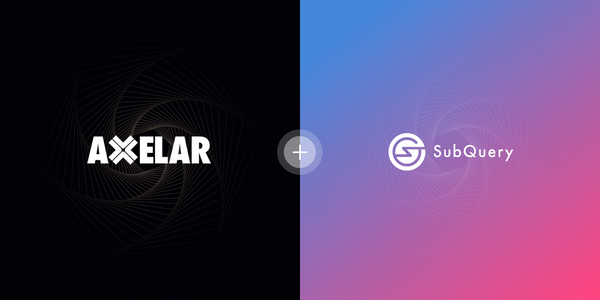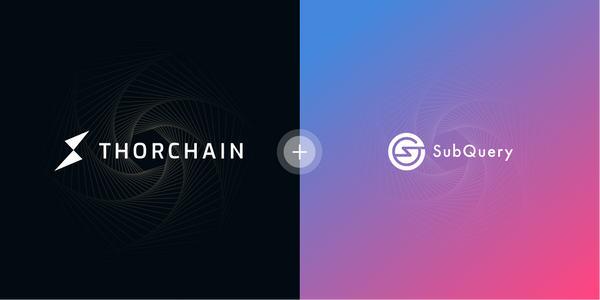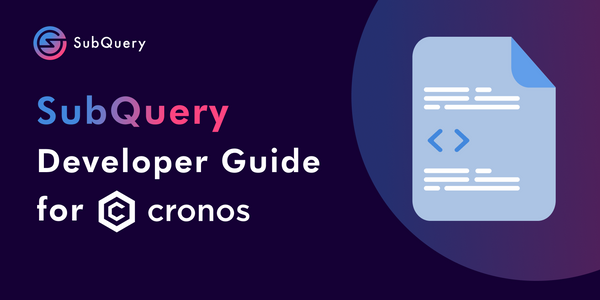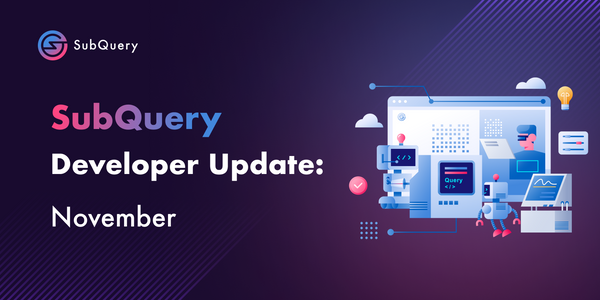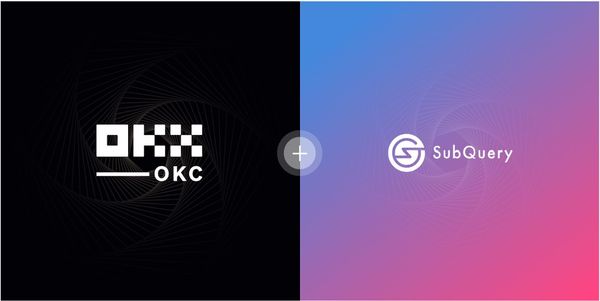SubQuery announces key milestones including TGE timeline
Today we are pleased to release our detailed technical roadmap for the first time. SubQuery’s goal is to be the leading data provider in the Polkadot ecosystem and the support we have had from the community to help us realise this vision has been amazing. From our formal establishment at the end of 2020 via a Web3 Grant, to releasing our first open source version in January 2021, and closing our Series A in September we would like to thank you for all of your support in getting us to this stage!
As we continue to gain momentum, the time has come to share more about our plans for the future including our technical roadmap. We are excited about how the next evolution of SubQuery will drive even more value to the Polkadot ecosystem and provide more opportunities for our community to participate in our growth.
Our Future
While SubQuery is already serving millions of data queries each day to over 60 projects on Polkadot & Kusama, we wanted to ensure that our next phase of growth was conducted in an organised and controlled manner.
For this reason, we feel it is critical that we demonstrate and fully test the scalability of the SubQuery Network through an incentivised testnet program. This process will also allow us to establish a community of indexers before launching publicly via a TGE in March 2022 and our eventual mainnet later next year.
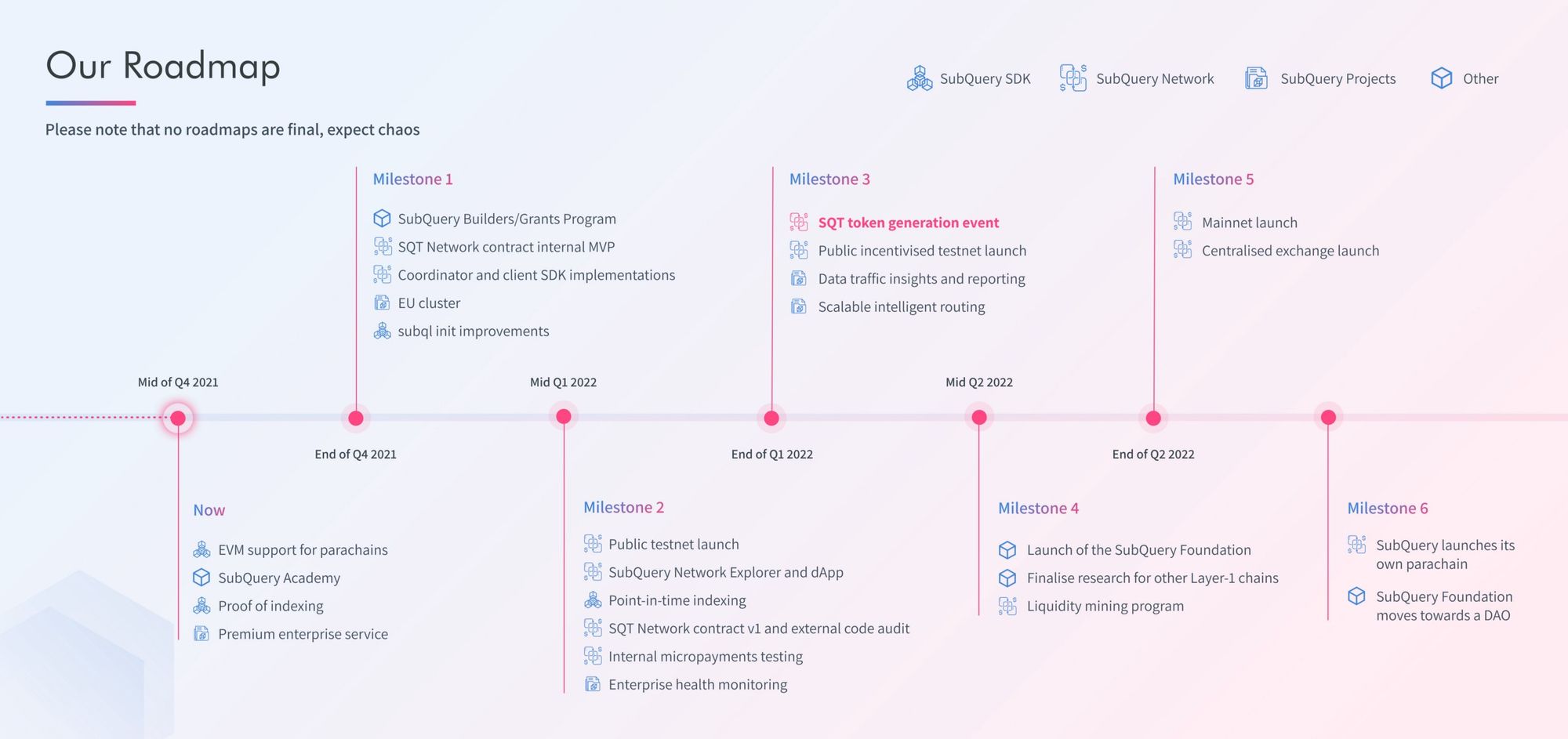
As such, the key deliverables in our work-flow can be broken into the following major milestones.
Where we are now — Middle of Q4 2021
EVM support for parachains
We will be releasing our beta support for Polkadot implementations of the Ethereum Virtual Machine (EVM) soon. This allows Polkadot and Ethereum developers to seamlessly integrate both Substrate and EVM data into one place and query this single datasource using GraphQL.
SubQuery will introduce more advanced filters than other indexers, allowing filtering of non-contract transactions, transaction senders, contracts and indexed log arguments, so developers can build a wide variety of projects that cater to their specific data needs.
SubQuery Academy
The Academy is designed to up-skill and empower developers in the SubQuery ecosystem by providing them with modular education. Our first course in the Academy is the Hero Course and was launched on Friday 22 October 2021.
Within each module of the Hero Course, there are several 5 to 10 minute lessons which are delivered by a recorded video. The video content is accompanied by written tutorials, slides, workbooks, and links to the finished GitHub code repository.
The course is designed to get a developer from knowing nothing about SubQuery to becoming an expert in building a SubQuery data source for their new blockchain application.
In the next few months we will be deploying more education for the Community, with weekly releases of new SubQuery Hero Course content, and more courses in the coming weeks.
Proof of Indexing
Proof of indexing allows us to guarantee that two different indexers working with the same SubQuery project have indexed the exact same data. It’s a critical component required for the development of a decentralized SubQuery network. We’re using a concept called Merkle Mountain ranges to confirm and guarantee this, keep an eye out for a future blog post that explores this deeper.
Premium Enterprise Service
We have some large customers such as Karura, Kodadot and Fearless Wallet all running production applications in SubQuery. These teams are demanding improved service and higher levels of reliability.
We’re rising to the challenge, with Service Level Agreements, enterprise service tiers, and other tools that our larger customers need to run their own businesses and receive the best possible performance from SubQuery for their applications.
Please get in contact with the team if you want to talk to us about receiving enterprise level services and support from SubQuery.
Milestone 1 — End of Q4 2021
SubQuery Builders/Grants Programme
This grants programme is designed to facilitate and catalyse innovation with Polkadot and SubQuery, and to build the next generation of dApps to power the web3 revolution. It will support new projects with grants, technical support, marketing and business development advice from SubQuery and others.
We are excited about the potential of this and will be releasing more information soon.
Coordinator and client SDK implementations
We will be improving our core SubQuery SDK and adding additional components for a SubQuery coordinator and client.
The indexer coordinator will be deployed by indexers to expose the network to the indexer, and allow the indexer to register itself with the SubQuery network and advertise the data that it is making available
The client SDK will be for the consumer role, and will allow them to find indexers and manage the entire transaction that a consumer will need to retrieve and pay for data.
SQT Network contract internal MVP
Our first version of the SubQuery network will be within a smart contract, deployed on a leading Polkadot parachain. The internal MVP will allow us to internally start testing out everything here, and is a huge milestone for us to complete.
EU Cluster
Our customers are requesting support for more clusters for SubQuery data around the world. More clusters mean more resiliency, and hosted SubQuery data closer to where their customers are. A new European cluster means faster requests for consumers, unrivalled performance for dApp developers and more resiliency for the SubQuery network.
Improvements to subql init
The subql init command is a familiar one for anyone that has built a SubQuery project; it represents a blank canvas — limitless opportunities. We are aware that we can do better to help others get started, rather than a blank canvas developers want a blank scaffold, where all the boiler-plate code is already written.
This roadmap item represents work we want to do to allow developers to start building on any parachain without needing to worry about endpoints, dictionaries, and types — all saving time for developers and helping others get started.
Milestone 2 — Middle of Q1 2022
Public testnet launch
Following the SQT Network contract internal MVP, we will invite a small group of participants to onboard and join us as we start testing the SubQuery Network. In order to launch, we need to complete a large number of tasks and an even bigger amount of documentation!
In early 2022, we will share more information about this process and how you can apply to take part.
Point-in-time indexing
Imagine being able to find out the state of the blockchain at a certain point in time - what exactly did a SubQuery project look like back at the 5 millionth block? This is exactly what this new feature will provide.
SQT Network contract v1 and external code audit
All important networks require a through code audit by an external partner to ensure that the network’s code is secure and scalable. SubQuery is no different, so we’ll be working with key partners for a full code audit here and also continue to receive code audits for our smart contracts going forward.
Internal micropayments testing
This is a key feature for us. We are going to be doing a lot of work within the Polkadot ecosystem to manage and handle micropayments within SubQuery. The advantage of Polkadot is tiny transaction fees relative to other networks like Ethereum, meaning micropayments are much more relevant to. This will roll out to our incentivised test network after we carry out thorough internal testing.
SubQuery Network Explorer and App
We’re building an explorer and other applications to allow participants in the SubQuery Network explore and find data within the SubQuery Network. Consumers will also use this to navigate the library of supported data sources, as well as delegators to analyse how indexers are performing to decide how to delegate their SQT tokens.
Enterprise health monitoring
Following on from our SubQuery Enterprise service tier, you can also expect a large amount of health monitoring and other performance analytics tools to be made available to customers.
Milestone 3 — End of Q1 2022
SQT token generation event
After a successful test network phase we are expecting to launch the SubQuery token on a Polkadot parachain partner. We will be sharing more information on our tokenomics with the community in the coming weeks.
Public incentivised testnet launch with micropayments
This is the final stage of our test network. We will release everything to our test network and expect participants to push it to its limits. This includes scale and load testing, fine tuning our economic models and coefficients, testing our documentation and onboarding processes, and making sure that you can transact with a precursor to SQT within it.
We expect that we will be rewarding participants of our test network, those that complete certain quests or tasks, and those that act as different members of the test network.
Data traffic insights and reporting
We are handling millions of data requests to SubQuery projects each day. Most of our customers don’t have analytics in their own dApps for user privacy but they still need to know how their dApps are operating so we will be improving this.
Scalable intelligent routing
We have a goal of a Billion daily SubQuery requests to our hosted service, that’s why we are going to introduce a globally scalable service with multiple SubQuery hosted services running.
It’s a new and continuously improving feature that automatically routes requests to the closest available node. Additionally, it allows us to redirect all requests immediately to a backup SubQuery zone, providing us with a fault tolerant system in the case of regional outage.
In the future it means that we’ll be creating more and more smaller SubQuery hosted services tactically placed closer to our users.
Milestone 4 — Middle of Q2 2022
Launch of the SubQuery Foundation
In our move to create a decentralized SubQuery Network we will establish a SubQuery Foundation to administer the future governance and growth of the ecosystem. The ownership of the SubQuery Network will come under the SubQuery foundation initially.
Finalise research for other Layer-1 chains
While our home will always be Polkadot we are exploring supporting various other Layer-1 blockchains with our indexing capabilities.
Liquidity mining program
In order to enhance the liquidity of the SQT token, we will create a liquidity mining program with a decentralized exchange (DEX). This will enable token holders to generate returns on their investment.
Milestone 5 — End of Q2 2022
Mainnet launch 🚀
After we complete testing of the SubQuery network will launch the first SubQuery Network mainnet. This is where everything really starts. Initially, we will onboard and reward participants of the test network, and then it will be completely open to everyone in the community.
Centralised Exchange launch
In order to drive increased adoption of SQT, we anticipate launching the token on one if not multiple leading CEX during this period as well as many other DEXs.
Milestone 6 — Long term plans
Launch our own Parachain
Although we initially plan to partner with a top Polkadot parachain to get SubQuery Network released and scaled quicker, in the long-term SubQuery also intends to launch on it’s own parachain and integrate itself even more in the ecosystem.
This self owned parachain will allow us to further innovate in tools that can help developers build the web3 future faster. We want to aim for a parachain slot once we have a proven track record behind us and the data, community, and token to support it.
SubQuery Foundation moves to a DAO
This one is a long way off, but it’s always our dream the SubQuery eventually becomes a community owned DAO. We’ve said many times that the community plays a huge part in SubQuery, everything that we do is for our customers — becoming a DAO is the embodiment of that focus.
That being said, this is a long long way off, and will only be done once we are absolutely confident of SubQuery's success and future with the community.
About SubQuery
SubQuery is a decentralized data aggregation, indexing & querying layer between Layer-1 blockchains and decentralized applications. The protocol abstracts away blockchain data idiosyncrasies with the SubQuery SDK, allowing developers to focus on deploying their core product without needlessly wasting efforts on custom backend technologies.
Linktree | Website | Discord | Telegram | Twitter | Matrix | LinkedIn | YouTube

